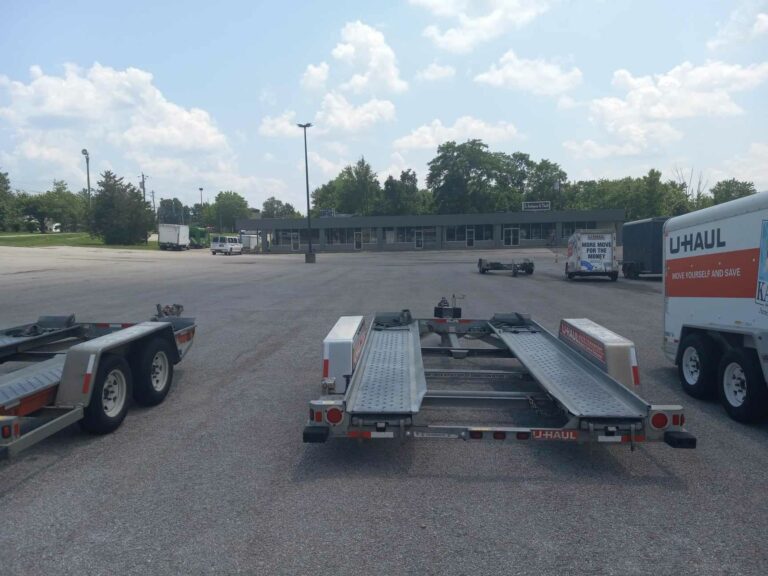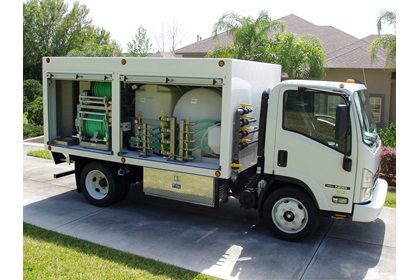Cost Of Mattracks: A Comprehensive Guide to Your All-Terrain Investment
Cost Of Mattracks: A Comprehensive Guide to Your All-Terrain Investment cars.truckstrend.com
Introduction: Unlocking Unstoppable Mobility
In a world where accessibility can be limited by challenging terrains – be it deep snow, soft sand, thick mud, or rugged rocky landscapes – conventional wheeled vehicles often fall short. This is where Mattracks come into play. Mattracks are specialized rubber track conversion systems that replace a vehicle’s tires, transforming it into an incredibly versatile, all-terrain machine. From UTVs and ATVs to pickup trucks, tractors, and even heavy equipment, Mattracks empower vehicles to traverse conditions that would otherwise be impassable.
Cost Of Mattracks: A Comprehensive Guide to Your All-Terrain Investment
The decision to equip a vehicle with Mattracks is a significant investment, one that promises unparalleled mobility, enhanced safety, and increased productivity across diverse applications. However, understanding the "Cost Of Mattracks" extends far beyond the initial purchase price. It encompasses a range of factors, from the specific model and vehicle compatibility to installation, maintenance, and the long-term operational impact. This comprehensive guide will delve into every aspect of Mattracks cost, providing a clear picture for anyone considering this transformative upgrade.
What Are Mattracks and Why the Investment?
Mattracks systems consist of four individual track units that bolt directly onto a vehicle’s existing wheel hubs, replacing the tires. Each track unit features a robust rubber track wrapped around a series of internal wheels and an external drive sprocket. This design dramatically increases the vehicle’s footprint, distributing its weight over a much larger area. The result is significantly reduced ground pressure, superior traction, and excellent flotation, preventing the vehicle from sinking or getting stuck in soft conditions.
Why are they considered an investment?
- Unparalleled All-Terrain Capability: Mattracks unlock access to remote areas previously unreachable by wheeled vehicles, crucial for search and rescue, utility line maintenance, geological surveys, and off-grid exploration.
- Enhanced Productivity: In agriculture, construction, or forestry, Mattracks allow work to continue in adverse weather conditions, extending operational seasons and increasing output.
- Safety and Stability: The wide, stable footprint of tracks reduces the risk of rollovers on uneven terrain and provides predictable handling in challenging environments.
- Reduced Ground Disturbance: The lower ground pressure minimizes rutting and compaction, which is beneficial for agricultural fields, environmentally sensitive areas, and manicured landscapes.
- Versatility: A single vehicle equipped with Mattracks can perform tasks that might otherwise require multiple specialized machines.
![]()
The initial outlay for Mattracks is substantial, but for many, the return on investment in terms of access, productivity, safety, and reduced downtime quickly justifies the expenditure.
Core Factors Influencing Mattracks Cost

The price of a Mattracks system is not a one-size-fits-all figure. Several key variables contribute to the final cost:
-
Vehicle Type and Application: The most significant factor. Mattracks are engineered specifically for different weight classes and vehicle types.
- Light-duty: ATV, UTV, small compact tractors (e.g., Mattracks LiteFoot, XT series). These are the most affordable.
- Medium-duty: Pickup trucks, SUVs, larger UTVs, mid-sized tractors (e.g., Mattracks 400, 600 series). Prices increase significantly here.
- Heavy-duty: Large agricultural tractors, commercial trucks, heavy equipment (e.g., Mattracks 800, 1000, 1500 series). These represent the highest end of the price spectrum due to their robust construction and load-bearing capacity.

-
Track Model/Series: Mattracks offers various series, each designed with specific features, load capacities, and performance characteristics. Higher series numbers generally indicate greater capability and a higher price tag. For example, the XT series for UTVs is less expensive than the 400 series for pickup trucks, which in turn is less than the 800 series for large tractors.
-
Track Width and Length: Wider and longer tracks provide better flotation and traction but require more material and complex engineering, leading to higher costs. Some models offer different track widths within the same series.
-
Material Composition and Construction: The quality and durability of the rubber tracks, internal components (bogie wheels, sprockets, suspension), and steel frames all impact the cost. Systems designed for extreme cold, heavy loads, or abrasive conditions will use more robust materials, driving up the price.
-
Suspension System: Advanced independent suspension systems within the track units can improve ride quality and performance over rough terrain, but they add to the manufacturing complexity and cost.
-
New vs. Used: As with any major equipment, purchasing a used Mattracks system can offer significant savings, but comes with inherent risks (discussed below).
-
Additional Features and Accessories:
- Anti-rotation brackets: Often required for truck applications to prevent track rotation.
- Gearing changes: Some heavy-duty applications might require differential gearing changes to optimize performance.
- Installation kits: Specific hardware tailored to your vehicle model.
- Specialized idlers/sprockets: For specific terrains or extended wear.
-
Dealer vs. Direct Purchase & Shipping: While Mattracks are primarily sold through a dealer network, the specific dealer’s pricing, location, and shipping costs can influence the final price. Shipping large, heavy track systems can be a considerable expense.
Breakdown of Mattracks Cost Categories
Understanding the "Cost Of Mattracks" means looking beyond just the sticker price:
-
Initial Purchase Price (The Tracks Themselves): This is the largest component. Prices can range from $5,000 for a used light-duty ATV system to over $100,000 for a new heavy-duty agricultural or industrial setup. The table below provides a more detailed estimate.
-
Installation Costs:
- DIY: If you have mechanical aptitude, the necessary tools (jacks, stands, torque wrenches), and follow the detailed instructions, you can install Mattracks yourself, saving labor costs. This typically takes a few hours for smaller vehicles, longer for larger ones.
- Professional Installation: Many dealers offer installation services. This can add $500 to $2,000+ to the overall cost, depending on the vehicle type and complexity.
-
Maintenance & Wear Parts: Like tires, Mattracks components wear out over time.
- Rubber Tracks: The primary wear item. Lifespan varies greatly depending on terrain, usage, and maintenance (2,000 to 10,000+ hours). Replacement can be a significant cost, ranging from $1,000 – $5,000+ per track unit depending on size and model.
- Bogie Wheels & Bearings: These internal wheels support the track. Replacement costs can range from $50 – $200 per wheel/bearing assembly.
- Sprockets: The drive sprocket can wear, especially in abrasive conditions. Replacement costs can be $300 – $1,000+ per sprocket.
- General Maintenance: Regular cleaning, inspection, and proper tensioning are crucial to maximize lifespan and minimize repair costs. This is often just a time investment.
-
Fuel Efficiency Impact: While not a direct cost, it’s a consideration. Mattracks increase rolling resistance and vehicle weight, which can lead to a 5-20% decrease in fuel efficiency compared to tires, especially at higher speeds or on hard surfaces. For heavy users, this can add up over time.
-
Storage: If you remove your Mattracks for seasonal use, you’ll need adequate, dry storage space.
New vs. Used Mattracks: A Cost-Benefit Analysis
The choice between new and used Mattracks significantly impacts the initial investment.
New Mattracks:
- Pros: Full manufacturer warranty, latest design improvements, no wear and tear, complete installation kit, direct support.
- Cons: Highest upfront cost.
Used Mattracks:
- Pros: Significantly lower upfront cost (often 30-60% less than new).
- Cons:
- No Warranty: Most used sales are "as-is."
- Hidden Wear: Inspect thoroughly for worn tracks, cracked bogie wheels, bent frames, or failing bearings. These can lead to immediate, costly repairs.
- Compatibility Issues: Ensure the used system is compatible with your specific vehicle year, make, and model. Adapter plates or specific hub bolt patterns are critical.
- Missing Parts: May come incomplete, requiring additional purchases.
- Shorter Lifespan: The remaining useful life of the components will be less than new.
Tips for Buying Used:
- Inspect Meticulously: Look for even wear on tracks, no cracking or tearing. Check bogie wheels for play and damage. Inspect the frame for bends or cracks.
- Ask for History: How were they used? How many hours?
- Verify Compatibility: Get the exact Mattracks model number and confirm it fits your vehicle.
- Factor in Potential Repairs: Budget for immediate replacement of some wear items.
Tips for Mitigating Mattracks Costs
While Mattracks are a premium product, there are ways to manage the overall expense:
- Thorough Research: Understand your specific needs. Don’t overbuy; a system designed for a UTV won’t handle a truck, but a truck system is overkill (and more expensive) for a UTV.
- Consider Used (Wisely): If budget is tight, a well-inspected used system can be a great value.
- Prioritize Maintenance: Regular cleaning, proper tensioning, and timely replacement of small wear parts will dramatically extend the life of the entire system, delaying costly major repairs or full replacements.
- DIY Installation: If you are mechanically inclined, installing the system yourself can save hundreds to over a thousand dollars in labor costs.
- Compare Quotes: Get quotes from multiple authorized Mattracks dealers, as pricing can vary.
- Seasonal Sales: While less common for such specialized equipment, sometimes dealers may offer incentives during off-peak seasons.
Potential Challenges and Solutions
- Challenge: High Initial Investment.
- Solution: Justify the cost by calculating the return on investment through increased productivity, extended operational seasons, reduced downtime from getting stuck, and access to previously unreachable areas. For commercial users, consider financing options.
- Challenge: Maintenance Complexity.
- Solution: Adhere strictly to the Mattracks owner’s manual for maintenance schedules and procedures. Most routine maintenance is straightforward. For complex repairs, consult an authorized dealer.
- Challenge: Reduced Top Speed.
- Solution: This is an inherent characteristic of tracks. Accept that Mattracks are designed for traction and flotation, not high-speed travel. Most vehicles equipped with Mattracks will have a top speed of 20-40 mph, which is adequate for off-road work.
- Challenge: Increased Turning Radius.
- Solution: Tracked vehicles typically require more space to turn than wheeled vehicles. Adapt your driving style and plan maneuvers accordingly. The improved traction often compensates for this in challenging environments.
Mattracks Estimated Price Table (New & Used)
Disclaimer: These prices are approximate estimates and can vary significantly based on dealer, location, specific model features, market demand, and the condition of used units. Always request a detailed quote for your specific vehicle and desired Mattracks model.
| Mattracks Series / Vehicle Type | Estimated New Price Range (USD) | Estimated Used Price Range (USD) | Key Features & Application |
|---|
Conclusion: Your All-Access Pass
The decision to invest in Mattracks is about more than just purchasing equipment; it’s about acquiring capabilities. While the cost can be substantial, ranging from a few thousand dollars for recreational light-duty systems to over a hundred thousand for industrial-grade applications, the value they provide in terms of enhanced mobility, increased productivity, and improved safety in challenging environments is often immeasurable.
A comprehensive understanding of the initial purchase price, installation considerations, and ongoing maintenance requirements is crucial for making an informed decision. By carefully weighing your specific needs, researching suitable models, and considering the long-term benefits, you can ensure that your Mattracks investment provides an exceptional return, transforming your vehicle into an unstoppable force, ready to tackle any terrain nature throws its way.






